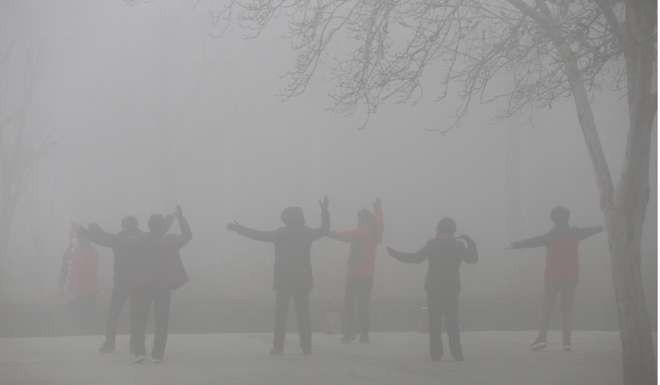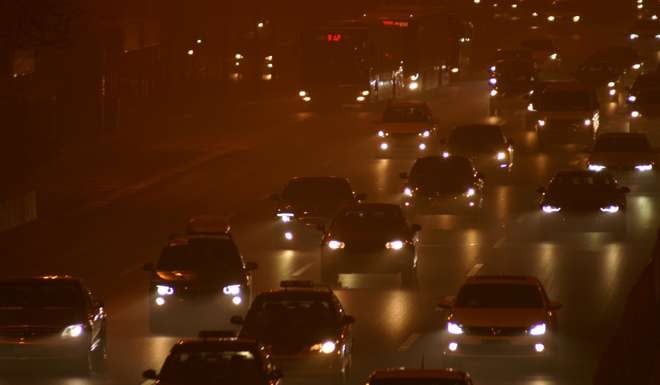
China’s local weather bureaus ordered to stop issuing smog warnings … but new alert system not yet in place
Move meant to clarify responsibility among agencies may cause public confusion, expert says
China’s local weather bureaus have stopped issuing smog warnings so that they can be coordinated under a unified alert system and sent out by a single department.
The China Meteorological Administration issued the order to weather bureaus from provincial levels and below on Tuesday in a notice that was widely circulated online.
The administration confirmed the move, the news portal Thepaper.cn reported.
But the move comes before a joint alert system has been set up. A department in charge of future smog alerts has yet to be named.
An official from the administration said the new system would coordinate smog-related warnings and one single department would be responsible for issuing smog alerts.
The joint system was being planned and in the consultation stage. It would be rolled out soon, he said.

Experts said the move was the administration’s attempt to clarify responsibility.
Weather bureaus and local emergency management departments previously often released different alerts at the same time, causing confusion, they said.
But Li Ting, a meteorology researcher at the Chinese Academy of Sciences, said on Weibo that while it was good to unify the alert system, halting smog alerts before a new system was in place could cause more public confusion.
Local weather bureaus follow a three-tier colour-coded smog alert system – yellow, orange and red in ascending order of severity – and issue warnings accordingly.
The local emergency management departments use a four-tier alert system for air pollution – blue, yellow, orange and red. They issue warnings under the advice of their local environmental protection department.

The air quality index, or AQI, is based on the concentration levels of six major atmospheric pollutants, comprising sulphur dioxide, nitrogen dioxide, carbon monoxide, ozone, PM10 and PM2.5 particles. PM10 pollutants are particulate matter smaller than 10 microns in diameter, while PM2.5 pollutants are even finer particles smaller than 2.5 microns in diameter, which can penetrate the lungs and are considered most harmful to human health.
Dong Liansai, a climate and energy campaigner at Greenpeace East Asia, said: “Alerts about heavy air pollution issued by the local emergency management departments are usually accompanied by a set of emergency measures, such as halting or cutting production in polluting factories.
“But the local weather bureau’s alerts are only to warn residents to watch out for severe weather conditions.”
Halting the local weather bureaus’ alert system was unlikely to affect air pollution forecasts for the public as the local emergency management departments’ alert system was still up and running, he said.
The environment ministry would also issue warnings when severe pollution was expected, he added.
